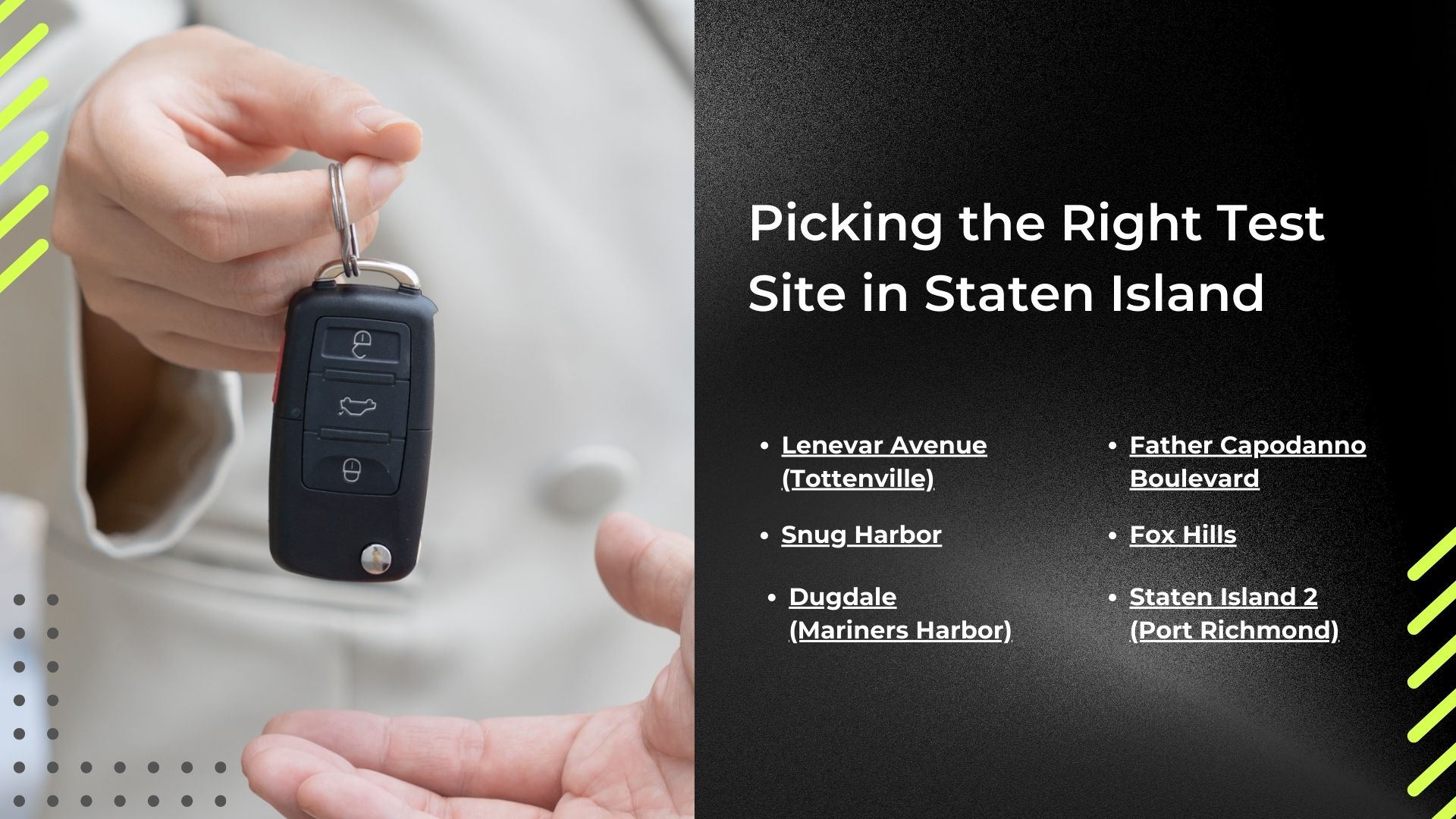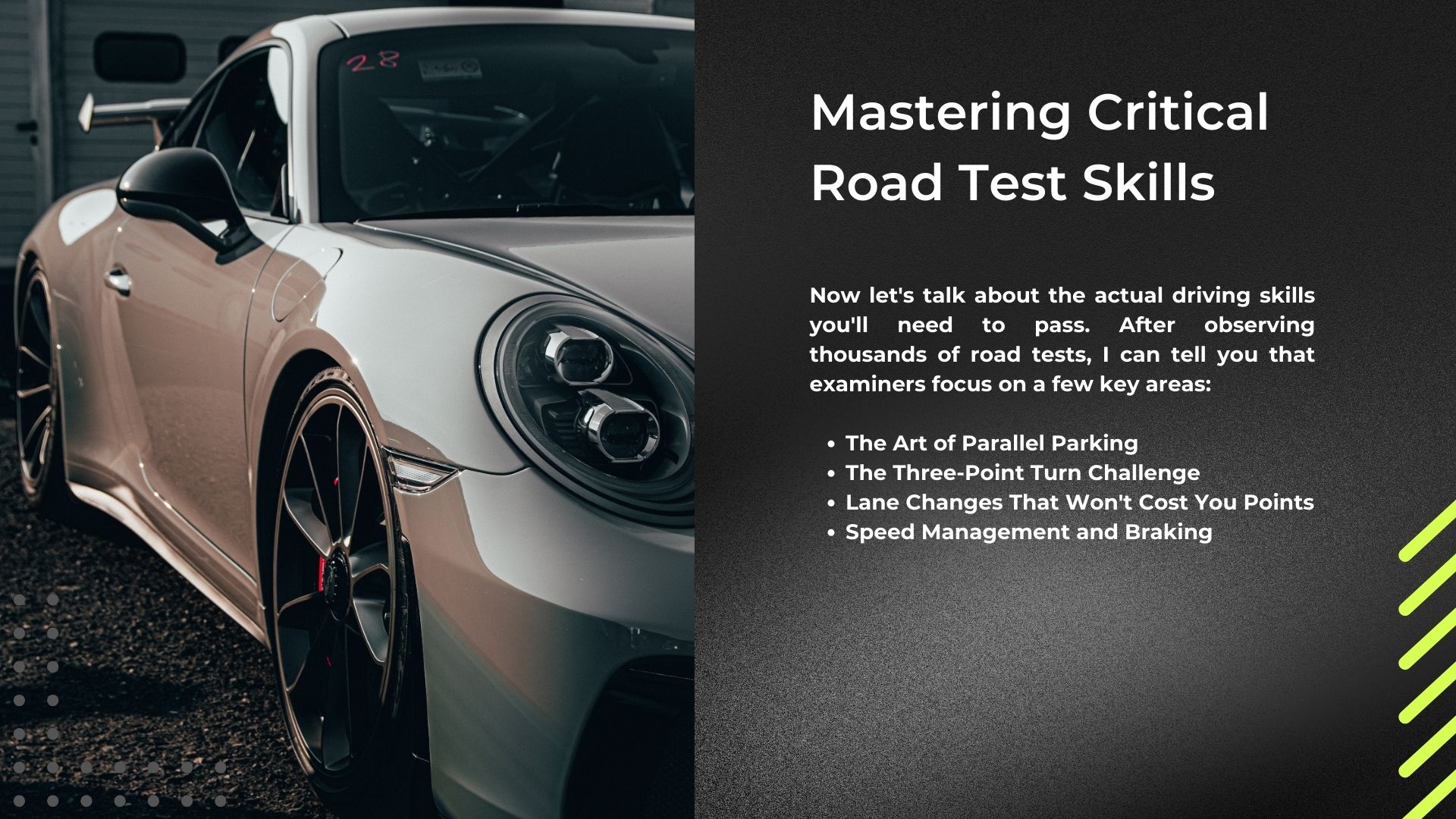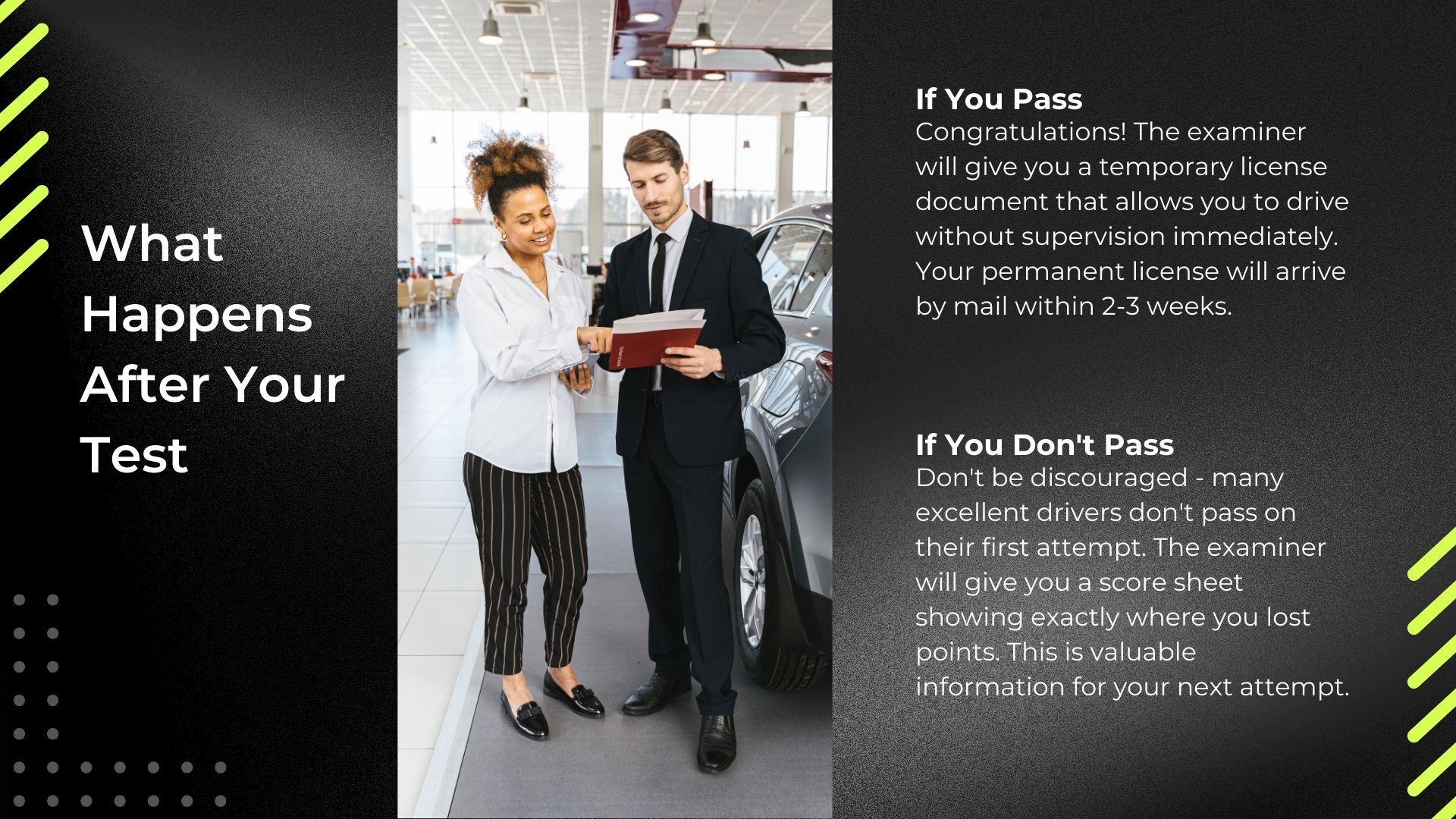How to Pass Your Road Test in Staten Island: A Complete Guide from CoreWay

Table of Contents
- The Road to Your Road Test: Meeting the Requirements
- Picking the Right Test Site in Staten Island
- The Vehicle: Your Test Day Chariot
- Mastering Critical Road Test Skills
- The Test Day Game Plan
- The Insider's Edge: Professional Training
- What Happens After Your Test
- Final Thoughts: It's About Safe Habits, Not Perfect Driving
So you've got your learner's permit and you're ready to take the next big step - passing your road test in Staten Island. As a driving instructor who's been teaching in Staten Island for over 15 years, I've guided hundreds of students through this process. I know exactly what the examiners are looking for, where they'll take you, and the common mistakes that can cost you your license.
In this guide, I'll walk you through everything you need to know to pass your Staten Island road test on the first try. No fluff, just practical advice from someone who sits in the passenger seat day in and day out.
The Road to Your Road Test: Meeting the Requirements
Before you can even schedule your test, you need to make sure you've got all your ducks in a row. The DMV is strict about these requirements, and there are no exceptions.
First things first, you need a valid learner's permit. If you're under 18, you'll need to have held this permit for at least 6 months before taking your road test. During this time, you should be logging at least 50 hours of supervised driving practice, with 15 of those hours at night. Keep a log - parents will need to sign off on this.
Everyone, regardless of age, needs to complete a 5-hour pre-licensing course. This course covers the rules of the road, defensive driving techniques, and the dangers of driving under the influence. You'll get a certificate (MV-278) upon completion, which you'll need when scheduling your test.
"But I already know how to drive!" I hear this all the time, especially from adults or people with licenses from other countries. It doesn't matter - New York State requires everyone to complete these steps. Trust me, the course contains state-specific information that will help you on your test.
Call Us Today 6AM-10PM
Or fill out the form 24/7
Our team is here to guide you with promotions, instructor availability, and the best training package for you.
Picking the Right Test Site in Staten Island

Staten Island has several road test sites, and choosing the right one can significantly impact your chances of passing. Based on our student success rates and years of experience, here's my breakdown of each location:
Lenevar Avenue (Tottenville)
This is generally the easiest site in Staten Island, with wider streets and less traffic. The route typically includes quiet residential areas around Tottenville High School. The parallel parking here is relatively straightforward, with ample space. If you're a nervous driver or still building confidence, this is your best bet.
Father Capodanno Boulevard
Located near the beach areas, this site features a mix of wider boulevards and residential streets. Traffic can be seasonal (heavier in summer), so keep that in mind when scheduling. The test route often includes some busier intersections, but overall it's a moderate difficulty level.
Snug Harbor
This North Shore site is one of the more challenging options, with hills, one-way streets, and ferry-related traffic. The parallel parking spaces tend to be tighter, and you'll likely encounter more pedestrians. I typically recommend this site only for my more experienced students.
Staten Island 2 (Port Richmond)
The Port Richmond area features narrower streets and some challenging parallel parking situations. Traffic can be unpredictable here, and some intersections have limited visibility. This is a medium to high difficulty site.
Fox Hills
Located in the Clifton area, this site has moderate traffic and a variety of road types. It's a middle-of-the-road option in terms of difficulty, making it suitable for most drivers with adequate practice.
Dugdale (Mariners Harbor)
This western Staten Island site features newer, wider roads but can include some higher speed zones. The parallel parking is generally less challenging than at other sites. It's a good option for drivers who are comfortable with speed management but want to avoid the trickier parking situations.
After years of taking students to all these sites, I've found that the Lenevar Avenue and Dugdale locations consistently have the highest pass rates for our students. If you have the option, these are the sites I'd recommend. For more information on test site difficulty across New York, check out our guide to the easiest road test sites in NY.
The Vehicle: Your Test Day Chariot
The car you use for your test matters - a lot. I've seen plenty of students fail before they even start driving because their vehicle didn't meet DMV requirements.
Your test vehicle must have:
- Valid registration and insurance
- Working lights (headlights, brake lights, turn signals)
- Functioning horn
- Good tires with proper inflation
- Working seat belts
- No dashboard warning lights
- Properly adjusted mirrors
- A working parking brake
The DMV inspector will check all of these items before your test begins. If anything isn't up to par, you'll be turned away and have to reschedule.
Don't have access to a suitable vehicle? At CoreWay, we provide road test cars that are guaranteed to pass inspection. We maintain these vehicles specifically for road tests, so you won't have to worry about mechanical issues on test day.
Call Us Today 6AM-10PM
Or fill out the form 24/7
Our team is here to guide you with promotions, instructor availability, and the best training package for you.
Mastering Critical Road Test Skills

Now let's talk about the actual driving skills you'll need to pass. After observing thousands of road tests, I can tell you that examiners focus on a few key areas:
The Art of Parallel Parking
Parallel parking is often the most nerve-wracking part of the test, but it doesn't have to be. Here's the method I teach my students that works consistently:
- Pull up alongside the front car, aligning your side mirror with their rear bumper
- Stop and turn your wheel all the way to the right
- Back up slowly until your car is at a 45° angle to the curb
- Straighten your wheel and continue backing until your front bumper clears the rear of the car in front
- Turn your wheel to the left and finish backing into the space
- Pull forward slightly to center your car in the space if needed
The number one rule: DO NOT hit the curb. This is an automatic fail in Staten Island. If you're unsure, leave extra space between your car and the curb. You'll lose a few points for being too far away, but that's much better than failing outright.
Practice this maneuver repeatedly in a parking lot with cones before attempting it on the street. For a detailed breakdown, check out our guide on how to parallel park for your road test.
The Three-Point Turn Challenge
The three-point turn (or K-turn) is another crucial skill. Here's how to execute it perfectly:
- Signal right and pull over to the right side of the road
- Check for traffic in all directions
- Signal left and turn the wheel fully left
- Drive across the road toward the opposite curb
- Stop before reaching the curb
- Shift into reverse and turn your head to look behind you
- Turn the wheel fully right and back up toward the opposite curb
- Stop before reaching it
- Shift back into drive, straighten your wheels, and proceed
A few key points that examiners look for:
- Complete stops at each phase of the turn
- Full head turns (not just using mirrors) when backing up
- Proper signaling
- Awareness of surrounding traffic
You can find more detailed instructions in our three-point turn guide.
Lane Changes That Won't Cost You Points
Lane changes seem simple but are a common source of point deductions. Here's the proper sequence:
- Signal for at least 3 seconds before changing lanes
- Check your mirrors
- Turn your head to check your blind spot
- Change lanes smoothly while maintaining speed
- Cancel your signal after completing the change
Make your head turns obvious so the examiner can see you checking your blind spots. This is something they specifically look for.
Speed Management and Braking
Appropriate speed is crucial during your test. I always tell my students to stay slightly under the speed limit - around 3-5 mph below is perfect. Driving too slowly can also cost you points, as it can impede traffic flow.
When approaching stops, begin braking early and gradually increase pressure for a smooth stop. For stop signs, come to a complete stop - the wheels must stop moving completely. Count "one-one thousand" to yourself before proceeding.
The Test Day Game Plan
What to Bring
On test day, make sure you have:
- Your learner's permit
- Pre-licensing course certificate (MV-278)
- A licensed driver (21+ years old) to accompany you
- Vehicle registration and insurance documents
- Glasses or contacts if you need them for driving
Before the Test
Arrive at least 15 minutes early. This gives you time to check in and mentally prepare. Before the examiner gets in the car:
- Adjust your seat and mirrors
- Fasten your seatbelt
- Familiarize yourself with the controls
- Take a few deep breaths to calm your nerves
During the Test
When the examiner enters the car:
- Listen carefully to all instructions
- Ask for clarification if needed
- Check mirrors and blind spots frequently and obviously
- Use turn signals for all turns and lane changes
- Stop completely at stop signs and red lights
- Stay in your lane during turns
- Maintain appropriate speed
The test typically lasts 15-20 minutes. During this time, the examiner will direct you through a predetermined route that includes various driving scenarios like turns, stops, and parking.
The Scoring System
Road tests in New York use a point deduction system. You start with a perfect score and lose points for each mistake. You can lose up to 29 points and still pass - 30 or more means failure.
Common point deductions include:
- Rolling through stop signs (-10 points)
- Improper lane usage (-10 points)
- Failure to signal (-5 points)
- Improper mirror usage (-5 points)
- Excessive speed (-10 points)
- Poor observation (-5 to -10 points)
- Inadequate space when parking (-5 points)
Certain actions result in automatic failure:
- Hitting the curb during parallel parking
- Dangerous actions requiring examiner intervention
- Traffic law violations (running red lights, etc.)
- Causing an accident or near-accident
For a complete breakdown, see our guide on automatic fails on NY road tests.
The Insider's Edge: Professional Training
While practicing with family members is valuable, there's no substitute for professional instruction. At CoreWay Driving School, we offer specialized road test preparation that gives you an edge:
- Site-Specific Training: We'll take you on the actual routes used at your chosen test site so there are no surprises on test day.
- Professional Feedback: Our instructors can identify and correct subtle habits that might cost you points - things family members might not notice.
- Test-Day Services: We offer a Rush Road Test package that includes lessons, a road test appointment (often faster than what you could get on your own), and use of our car for the test.
- Last-Minute Tune-Ups: Our "Brush Up" lessons right before your test can make all the difference, refreshing key skills and boosting your confidence.
Many of our students who failed when trying on their own pass on their first attempt after just a few lessons with us. The difference is knowing exactly what examiners are looking for and how to demonstrate those skills effectively.
What Happens After Your Test

If You Pass
Congratulations! The examiner will give you a temporary license document that allows you to drive without supervision immediately. Your permanent license will arrive by mail within 2-3 weeks.
Even after passing, pay attention to any feedback the examiner provides. These insights can help you become a safer, more confident driver in the long run.
If You Don't Pass
Don't be discouraged - many excellent drivers don't pass on their first attempt. The examiner will give you a score sheet showing exactly where you lost points. This is valuable information for your next attempt.
You'll need to wait at least 24 hours before taking another test. Use this time to practice the specific skills that cost you points. Consider taking a focused lesson with a professional instructor to address these areas.
With our rush road test service, we can often get you a new appointment within days rather than weeks.
Final Thoughts: It's About Safe Habits, Not Perfect Driving
After helping countless Staten Islanders pass their road tests, I've noticed one consistent pattern: those who approach the test as a demonstration of safe driving habits rather than a perfect performance tend to do best.
Examiners aren't looking for flawless driving - they're looking for evidence that you'll be a safe, responsible driver once licensed. They want to see that you check your surroundings consistently, follow traffic laws, and make cautious decisions.
Remember that nervous energy is normal. Channel it into heightened awareness rather than letting it undermine your confidence. Take deep breaths, focus on one instruction at a time, and demonstrate the safe driving habits you've been practicing.
Ready to ace your Staten Island road test? Contact CoreWay Driving School today. Our specialized road test preparation has helped thousands of Staten Island residents get their licenses on the first try. We know exactly what it takes to succeed, and we're ready to help you navigate this important milestone with confidence.
Drive safe, and I'll see you on the road!
This guide was written by Michael Rodriguez, Lead Instructor at CoreWay Driving School with 15+ years of experience preparing students for Staten Island road tests. For personalized assistance or to schedule lessons, call us at +1 (914) 825-6274 or visit coreway.nyc.
Call Us Today 6AM-10PM
Or fill out the form 24/7
Our team is here to guide you with promotions, instructor availability, and the best training package for you.
Frequently Asked Questions
-
How long will my road test take?
The driving portion typically lasts 15–20 minutes, but allow about an hour for the entire process including check-in and vehicle inspection.
-
What are the best days and times to schedule a road test in Staten Island?
Mid-week mornings (Tuesday through Thursday, 9:30–11:30 am) typically have less traffic and more relaxed conditions. Avoid rush hours and weekend appointments if possible.
-
Can I take my road test in the rain or snow?
Tests proceed in light rain but may be rescheduled in severe weather. If there's active snowfall or icy conditions, tests are usually postponed. The examiner makes this call on site.
-
I have a license from another country. Do I still need to take the road test in New York?
Yes. New York State requires all new residents to obtain a NY driver license, regardless of prior driving experience. See our guide on driving with a foreign license in NY for more details.
-
How far from the curb should I park during the parallel parking portion?
The legal requirement is within 12 inches of the curb. Aim for 6–9 inches if possible, but remember that touching the curb results in automatic failure. When in doubt, leave more space.
-
What if I can't find a suitable car for my test?
We provide cars for road tests at all Staten Island locations. Our vehicles are guaranteed to pass inspection and are specifically maintained for road tests.
-
Can I use a backup camera during my road test?
Yes, but don't rely on it exclusively. Examiners want to see you physically turn your head to check blind spots and when backing up.
 English
English Spanish
Spanish 

